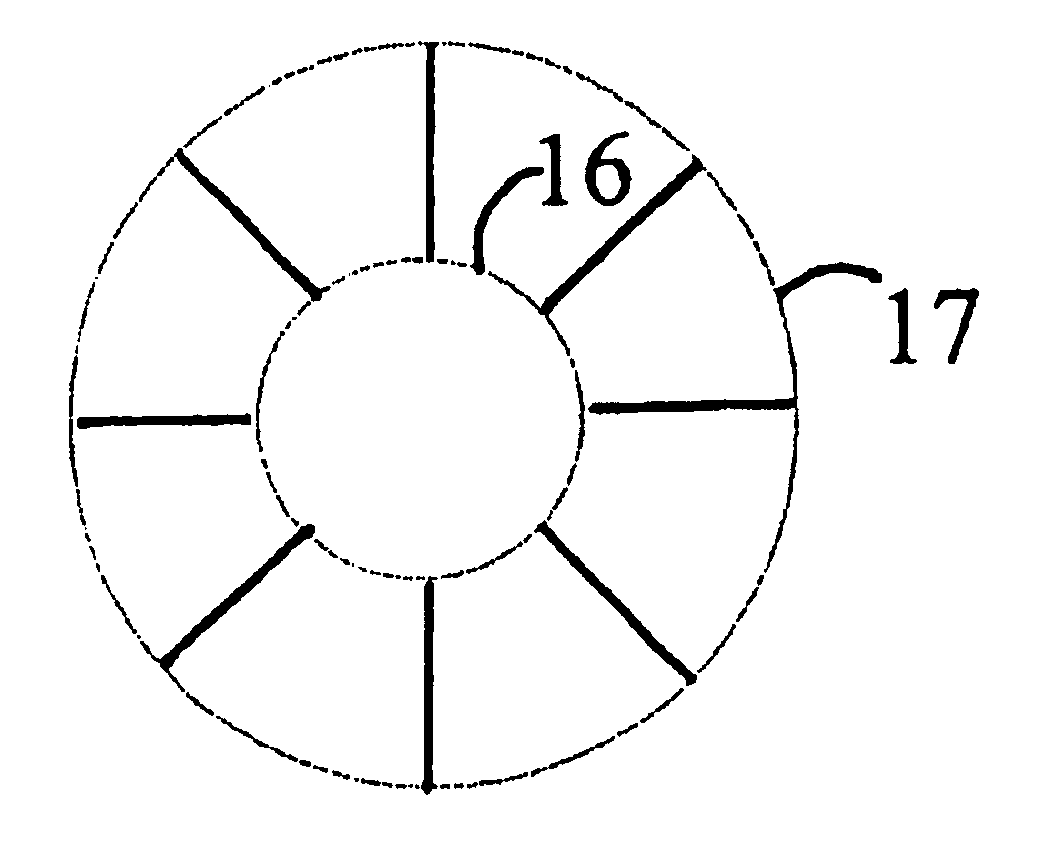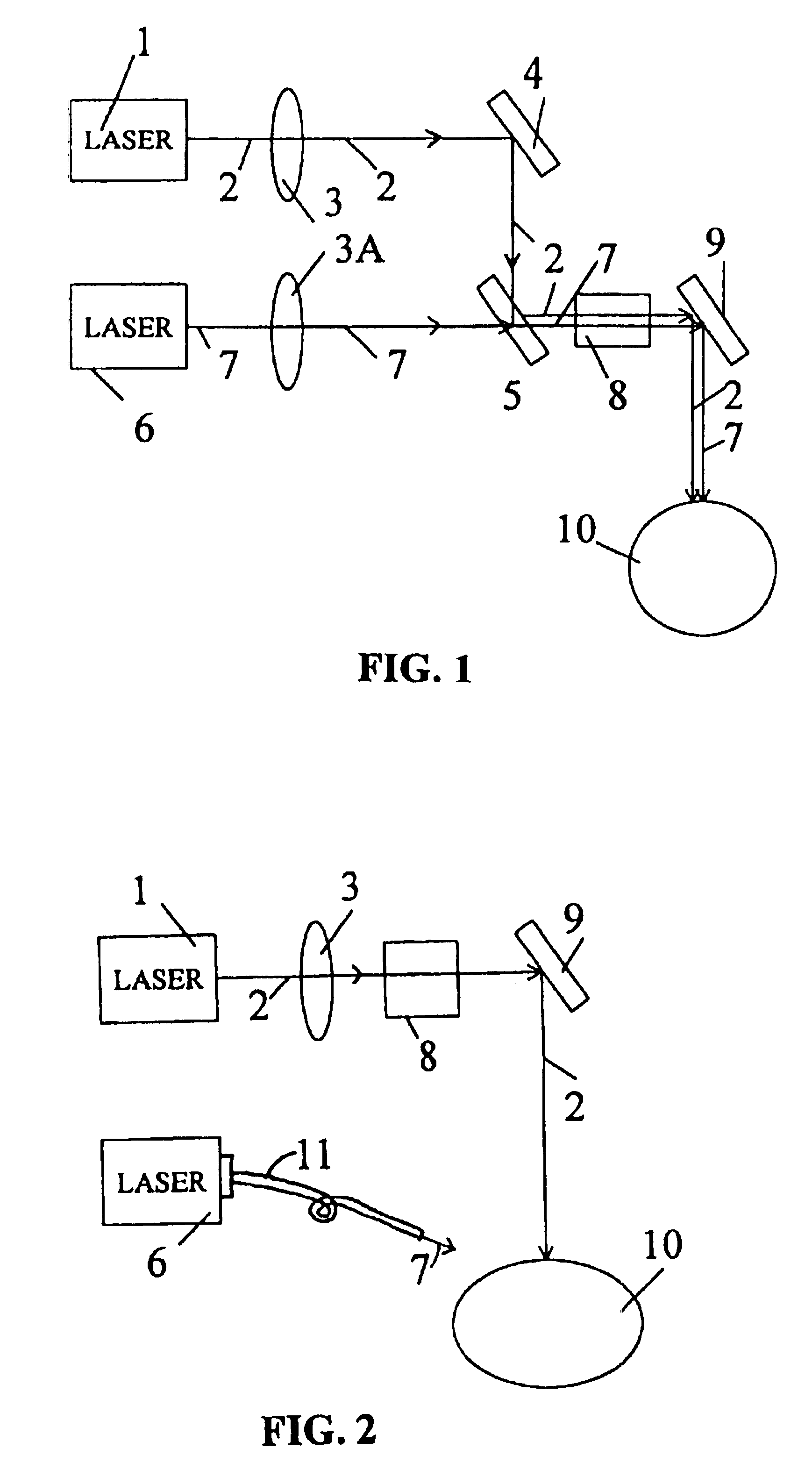Treatment of presbyopia and other eye disorders using a scanning laser system
a scanning laser and presbyopic technology, applied in the field of presbyopic treatment and the treatment and prevention of glaucoma using dual, can solve the problems of inability to present details or practical methods or laser parameters for presbyopic correction, mechanical approaches have drawbacks of complexity and time consumption, and prior art laser parameters do not present details or practical methods for presbyopic correction, so as to prevent bleeding, effectively ablate the sclera tissue, and prevent the bleeding
- Summary
- Abstract
- Description
- Claims
- Application Information
AI Technical Summary
Benefits of technology
Problems solved by technology
Method used
Image
Examples
Embodiment Construction
[0026]FIG. 1 of the drawings is a schematic of a laser system having an ablative laser 1 producing a laser beam 2 of a predetermined wavelength and focused by a lens 3 onto a reflecting mirror 4 which is coupled to another reflecting mirror 5. The system also consists of a coagulation laser 6 having a laser beam 7 of a predetermined wavelength focused by a lens 3A through a mirror 5. The ablation laser 1 beam 2 and the coagulation laser 6 beam 7 are directed onto a scanner 8. The beams 2 and 7 are then reflected by a mirror 9 onto the cornea 10 of a patient's eye. The scanner 8 consists of a pair of motorized coated mirrors with a 45 degree highly reflecting both the ablative laser beam 2 and the coagulative laser beam 7. The mirror 4 and mirror 9 are highly reflective to the wavelength of the beams 2 and 7. Mirror 5 is coated such that it is highly reflective of laser beam 2 but highly transparent to laser beam 7. The focusing lens 3 has a focal length of about 10-100 cm such that ...
PUM
 Login to View More
Login to View More Abstract
Description
Claims
Application Information
 Login to View More
Login to View More - R&D
- Intellectual Property
- Life Sciences
- Materials
- Tech Scout
- Unparalleled Data Quality
- Higher Quality Content
- 60% Fewer Hallucinations
Browse by: Latest US Patents, China's latest patents, Technical Efficacy Thesaurus, Application Domain, Technology Topic, Popular Technical Reports.
© 2025 PatSnap. All rights reserved.Legal|Privacy policy|Modern Slavery Act Transparency Statement|Sitemap|About US| Contact US: help@patsnap.com



